Welcome to our comprehensive guide to Rotala Indica, a captivating aquatic plant that will elevate the beauty of your freshwater aquarium.
Whether you’re a beginner or a seasoned aquarist, this guide has everything you need to know about Rotala Indica, from its characteristics to essential care tips. Let’s dive in and explore the wonders of this stunning plant.
Key Takeaway
- Rotala Indica is a vibrant and popular aquatic plant that adds beauty to freshwater aquariums.
- Proper care and maintenance are crucial for ensuring the healthy growth of Rotala Indica.
- Creating optimal water conditions, providing appropriate lighting, and using the right substrate and fertilization are essential for Rotala Indica’s well-being.
- Aquatic plants, including Rotala Indica, play a vital role in maintaining a balanced aquarium ecosystem.
- With the right techniques, you can cultivate, propagate, and address common health issues of Rotala Indica.
Quick Stats
| Attribute | Details |
| Family Name | Lythraceae |
| Common Name | Indian Toothcup, Rotala |
| Origin | Southeast Asia, specifically India |
| Height | 20-50 cm (8-20 inches) |
| pH Range | 6.0 – 7.5 |
| CO2 Requirement | Low to Moderate |
| Growth Rate | Moderate to Fast |
| Care Level | Easy to Moderate |
| Color Form | Bright green, can develop reddish hues under high light |
| Water Conditions | 18-28°C (64-82°F), soft to moderately hard water |
| Max Size | Typically remains small, with narrow leaves |
| Lighting | Moderate to High |
| Supplements | Minimal; benefits from nutrient-rich substrate and occasional liquid fertilization |
| Placement | Mid-ground to Background |
| Propagation | Easily propagated through stem cuttings or replanting trimmings |

What Is Rotala Indica?
Rotala Indica, also known as Indian toothcup, is a species of aquatic plant that belongs to the family Lythraceae.
It is native to South Asia and is widely cultivated for its vibrant and colorful foliage.
Rotala Indica is known for its delicate, slender stems and narrow, lance-shaped leaves.
The plant’s foliage can range in color from green to shades of red, depending on the growing conditions.
It is a popular choice among aquarists due to its stunning appearance and ease of care.
For aquarists, Rotala Indica is a fantastic addition to freshwater aquariums.
Its bright colors and elegant structure create a visually appealing underwater landscape.
Whether you’re a beginner or an experienced hobbyist, incorporating Rotala Indica into your aquarium can bring a vibrant touch to your aquatic ecosystem.
Physical Characteristics
- Stem Structure: Rotala indica is characterized by thin, delicate stems that can grow vertically or slightly inclined. These stems can reach heights of 10 to 40 centimeters (4 to 16 inches), depending on environmental conditions and care.
- Leaf Arrangement: The leaves of Rotala indica are typically arranged in pairs or whorls along the length of the stem. Each pair of leaves grows opposite each other along the stem, giving the plant a symmetrical appearance.
- Leaf Shape and Color: The leaves of Rotala indica are narrow and lanceolate, tapering to a point at the tip. They are usually light green to reddish-green in color, with variations depending on lighting, nutrient levels, and other environmental factors. Under high light intensity and nutrient availability, the plant may exhibit more intense red or pink hues.
- Root System: Rotala indica develops a fibrous root system that anchors the plant in the substrate. While the roots are relatively shallow compared to other aquatic plants, they play a crucial role in nutrient uptake and stability.
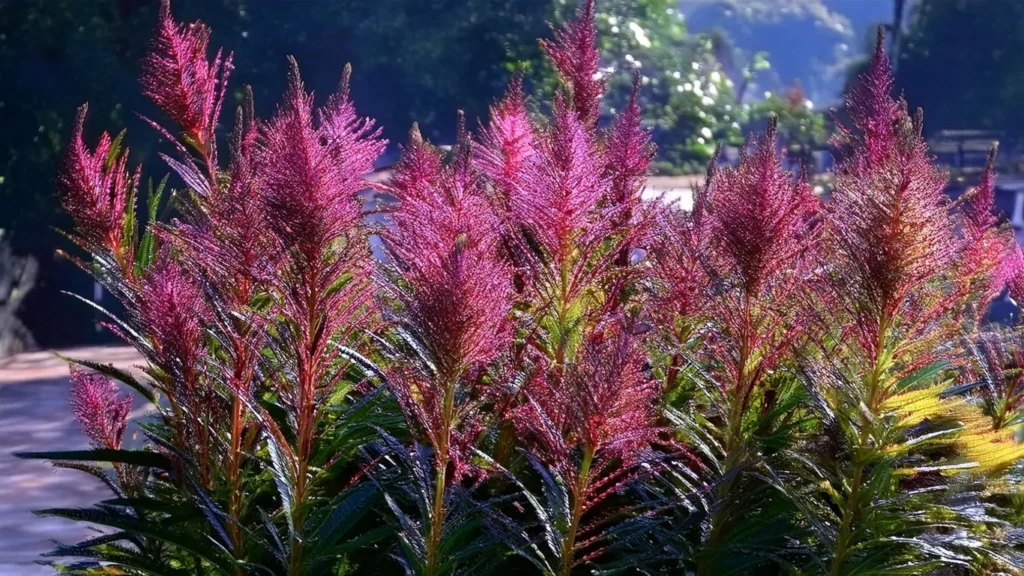
Temperature Parameters For Growth
- Optimal Temperature Range: Rotala indica thrives in tropical to subtropical climates and prefers water temperatures ranging from 72°F to 82°F (22°C to 28°C). This temperature range provides the ideal conditions for its growth and development.
- Temperature Sensitivity: While Rotala indica can tolerate slight fluctuations in temperature, it is sensitive to extreme changes. Sudden drops or rises in temperature outside its optimal range can stress the plant, leading to stunted growth or even die-off in severe cases.
- Stability in Temperature: Maintaining a stable water temperature within the recommended range is crucial for the health and vigor of Rotala indica. Fluctuations beyond the tolerance limits can disrupt metabolic processes, hinder nutrient uptake, and weaken the plant’s overall resilience.
- Seasonal Considerations: During seasonal changes, such as transitioning from summer to winter or vice versa, it’s essential to monitor and adjust tank conditions accordingly. In colder climates, using heaters during winter months can help maintain the desired temperature range for the continued growth of Rotala indica.
Optimal Water Conditions For Thriving Rotala Indica
Rotala Indica thrives in certain water parameters that closely mimic its natural habitat.
Here are the recommended water parameters for cultivating this stunning aquatic plant:
- Temperature: 72-82°F (22-28°C)
- pH: 6.0-7.5
- Hardness: Soft to moderately hard
- Ammonia, Nitrite, and Nitrate levels These should be kept at low levels, ideally zero for nitrite and ammonia and below 20ppm for Nitrate.
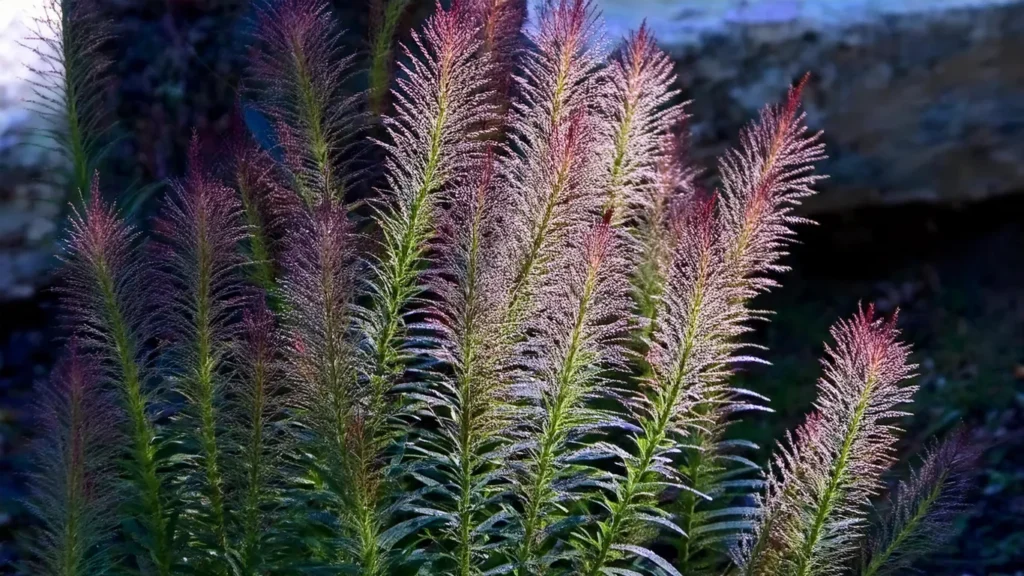
The Role Of Lighting In Rotala Indica Growth
Proper lighting is essential for the healthy growth and development of Rotala Indica.
As a light-demanding plant, it requires moderate to high-intensity lighting to support photosynthesis. Here are some key considerations for lighting:
- Intensity: Provide 3-4 watts per gallon of fluorescent or LED lighting. Adjust the intensity based on your aquarium’s specific needs and the light requirements of other plants in your setup.
- Duration: Provide 8-10 hours of consistent lighting each day to maintain a stable photoperiod.
- Spectrum: To promote healthy growth and coloration of Rotala Indica, use a full-spectrum light with a color temperature of around 6500K.
Importance Of Substrate And Fertilization
The choice of substrate and fertilization methods can significantly impact the growth and coloration of Rotala Indica. Here are some important considerations:
- Substrate: Choose a nutrient-rich substrate that provides essential minerals and nutrients for plant growth. Substrate options like nutrient-rich soil, clay-based substrates, or aqua soil are ideal for promoting healthy root development in Rotala Indica.
- Fertilization: Supplement the nutrient content of your aquarium with a balanced liquid fertilizer or root tabs to ensure that Rotala Indica receives adequate nutrients. Pay attention to macronutrients (such as Nitrogen, Phosphorus, and Potassium) and micronutrients (such as Iron, Magnesium, and Calcium) for optimal growth.
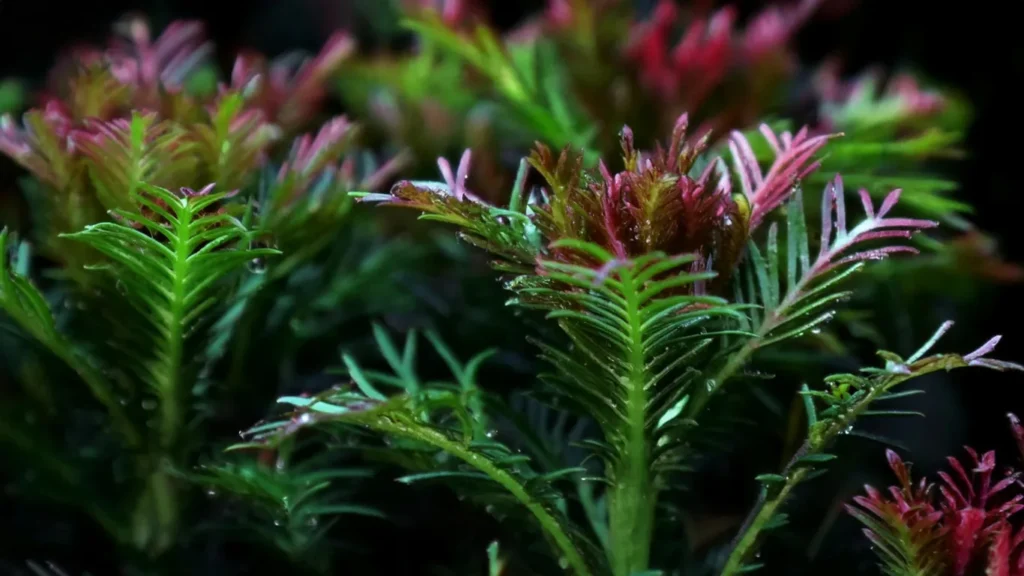
Placement Option
- Background Planting: Rotala Indica can be positioned in the background of the aquarium, especially in taller tanks. This placement allows it to grow upwards and fill the vertical space, creating a lush background.
- Midground Planting: In smaller or medium-sized tanks, you can place Rotala Indica in the midground area. This provides a balance between the foreground and background plants, creating depth and visual interest in the tank.
- Foreground Planting: While Rotala Indica is typically a background or midground plant due to its height, it can also be strategically placed in the foreground. However, regular trimming may be necessary to prevent it from overshadowing smaller foreground plants.
RELATED: A Guide To Cultivate Eleocharis Parvula (Dwarf Hairgrass) At Home
Recommended Tank Size
- Temperature Range: Rotala Indica thrives in a relatively warm aquatic environment. It prefers water temperatures ranging from 72°F to 82°F (22°C to 28°C). Maintaining temperatures within this range is essential for its health and growth.
- Stability: While Rotala Indica can tolerate minor fluctuations in temperature, it’s crucial to maintain stability. Sudden temperature changes or prolonged exposure to extremes can stress the plant, leading to stunted growth or deterioration.
- Tropical Conditions: As a species native to tropical regions, Rotala Indica adapts well to typical aquarium conditions. Providing consistent warmth mimics its natural habitat and encourages robust growth and vibrant coloration.
- Seasonal Adjustments: During seasonal changes, such as shifts in ambient room temperature or variations in outdoor climate affecting aquarium temperature, it’s advisable to monitor and adjust tank heaters or coolers accordingly to ensure the plant remains within its preferred temperature range.
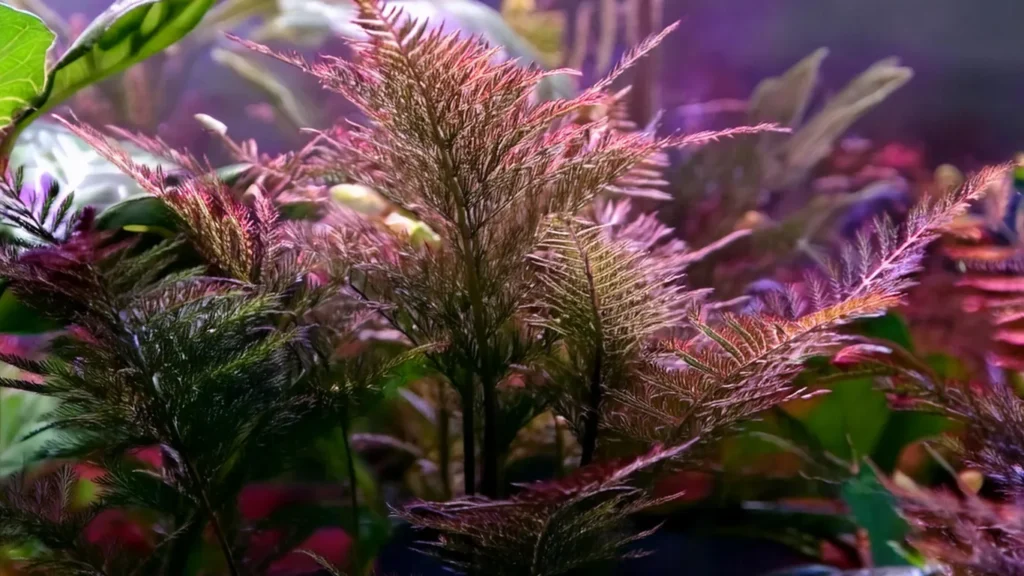
Suitable Tank Mates
Peaceful Community Fish
- Tetras: Neon Tetras, Cardinal Tetras, and other small tetra species are colorful, peaceful fish that won’t bother Rotala Indica.
- Rasboras: Harlequin Rasboras, Chili Rasboras, and other Rasbora species are small, peaceful fish that make excellent tank mates.
- Dwarf Gouramis: These small, peaceful labyrinth fish add a splash of color to the tank and generally leave plants alone.
- Guppies and Platies: Colorful and active, these livebearers are generally peaceful and suitable for community tanks with Rotala Indica.
- Corydoras Catfish: Corydoras species are bottom-dwelling fish that are compatible with Rotala Indica. They help keep the substrate clean without disturbing the plants.
Shrimp and Snails
- Cherry Shrimp and Amano Shrimp: These small invertebrates are excellent algae eaters and won’t harm Rotala Indica.
- Nerite Snails: Nerite snails are great algae eaters and won’t disturb the plants or uproot them.
- Malaysian Trumpet Snails: These snails burrow in the substrate and help aerate it. They’re beneficial to the overall health of the aquarium.
Bottom Dwellers
- Dwarf Corydoras: Pygmy Corydoras and other dwarf species are small, peaceful catfish that stay near the bottom of the tank and won’t disturb Rotala Indica.
- Otocinclus Catfish: Otos are excellent algae eaters and are peaceful, making them suitable companions for Rotala Indica.
- Kuhli Loaches: These slender, peaceful loaches are great for planted tanks and won’t harm Rotala Indica.
Nutritional Needs Of The Plant
Rotala Indica, like other aquatic plants, requires several key nutrients to thrive. Understanding these nutritional needs is essential for maintaining healthy growth. Here are the primary nutritional requirements of Rotala Indica:
Macronutrients
- Nitrogen (N): Nitrogen is a crucial component of chlorophyll, the pigment responsible for photosynthesis. Rotala Indica utilizes nitrogen for overall growth and development. It can be obtained from nitrates (NO3-) and ammonium (NH4+).
- Phosphorus (P): Phosphorus is essential for energy transfer within the plant, particularly in processes like photosynthesis and cell division. It’s vital for root development and overall plant growth. Phosphorus is typically obtained from phosphate ions (PO4^3-).
- Potassium (K): Potassium plays a significant role in various physiological processes, including enzyme activation, osmoregulation, and stomatal regulation. It contributes to overall plant health, growth, and resistance to diseases and stress.
Secondary Nutrients
- Calcium (Ca): Calcium is essential for cell wall structure and stability. It also aids in root development and nutrient uptake.
- Magnesium (Mg): Magnesium is a central component of chlorophyll molecules, playing a crucial role in photosynthesis. It’s essential for energy transfer and enzyme activation within the plant.
Micronutrients (Trace Elements)
- Iron (Fe): Iron is crucial for chlorophyll synthesis and is involved in electron transport during photosynthesis. Iron deficiency can lead to chlorosis (yellowing of leaves).
- Manganese (Mn), Zinc (Zn), Copper (Cu), Boron (B), Molybdenum (Mo), and Chlorine (Cl): These micronutrients are required in smaller quantities but are essential for various metabolic processes within the plant, including enzyme activation and hormone synthesis.

Rotala Indica Cultivation Tips
- Carbon Dioxide (CO2): Consider supplementing carbon dioxide (CO2) in the aquarium, especially in high-tech setups. CO2 supplementation promotes vibrant growth and enhances the coloration of this plant. However, it can still grow in aquariums without CO2 supplementation, albeit at a slower rate.
- Nutrient Supplementation: Provide liquid fertilizers or dry fertilizers containing macro and micronutrients essential for plant growth. Ensure a balanced nutrient regimen to prevent deficiencies and promote healthy growth. Pay attention to the requirements of Rotala Indica for nitrogen, phosphorus, potassium, and micronutrients.
- Water Parameters: Maintain stable and optimal water parameters for this plant. It generally thrives in slightly acidic to neutral water with a pH range of 6.0 to 7.5. Water temperature should be kept between 72°F to 82°F (22°C to 28°C).
- Pruning: Regularly prune Rotala Indica to promote bushy growth and prevent the plant from becoming leggy. Trim the stems back to encourage lateral growth and replant the trimmings to propagate new plants.
- Propagation: this plant can be propagated through stem cuttings. Simply cut a healthy stem with sharp scissors and replant the cutting into the substrate. Ensure that each cutting has several leaves for optimal growth.
Plant Propagation Tips
- Select Healthy Stems: Choose healthy stems with no signs of decay, damage, or disease. Healthy stems typically have vibrant green leaves and firm, sturdy stems.
- Prepare Equipment: Use sharp, clean scissors or aquascaping tools to make clean cuts. Dull or dirty tools can damage the plant and increase the risk of infection.
- Take Cuttings: Using your scissors, cut a portion of the stem just below a node (where leaves are attached). Each cutting should be around 2 to 4 inches (5 to 10 cm) long, with several leaves attached.
- Trim Leaves: Remove any leaves from the bottom portion of the cutting that will be planted in the substrate. Leaving a few leaves at the top of the cutting will help the plant continue photosynthesis while it roots.
- Plant Cuttings: Insert the cuttings into the substrate, making sure to bury the bottom portion of the stem securely. Plant them at an angle to encourage new growth and prevent them from floating away.
Benefits Of Planting Rotala Indica
- Natural Filtration: Like all aquatic plants, this plant helps to naturally filter the water in your aquarium by absorbing excess nutrients, such as nitrates and phosphates, that can contribute to algae growth. This can help to maintain water quality and clarity, creating a healthier environment for your fish and other aquatic inhabitants.
- Oxygenation: During photosynthesis, it absorbs carbon dioxide and releases oxygen into the water. This process helps to oxygenate the aquarium, providing vital respiratory support for fish, shrimp, and other aquatic organisms.
- Algae Control: By competing with algae for nutrients and light, this plant can help to inhibit the growth of unwanted algae in your aquarium. The dense growth of this plant can shade the substrate and create competition for resources, reducing the likelihood of algae outbreaks.
- Aquascape Enhancement: this plant adds visual interest and texture to your aquascape with its delicate, branching stems and vibrant green foliage. It can be used to create lush background plantings, fill in empty spaces, or add depth and dimension to your underwater landscape.
- Habitat and Shelter: The dense growth of this plant provides habitat and shelter for fish, shrimp, and other aquatic creatures. It offers refuge for shy or breeding fish, as well as a grazing surface for algae-eating species.
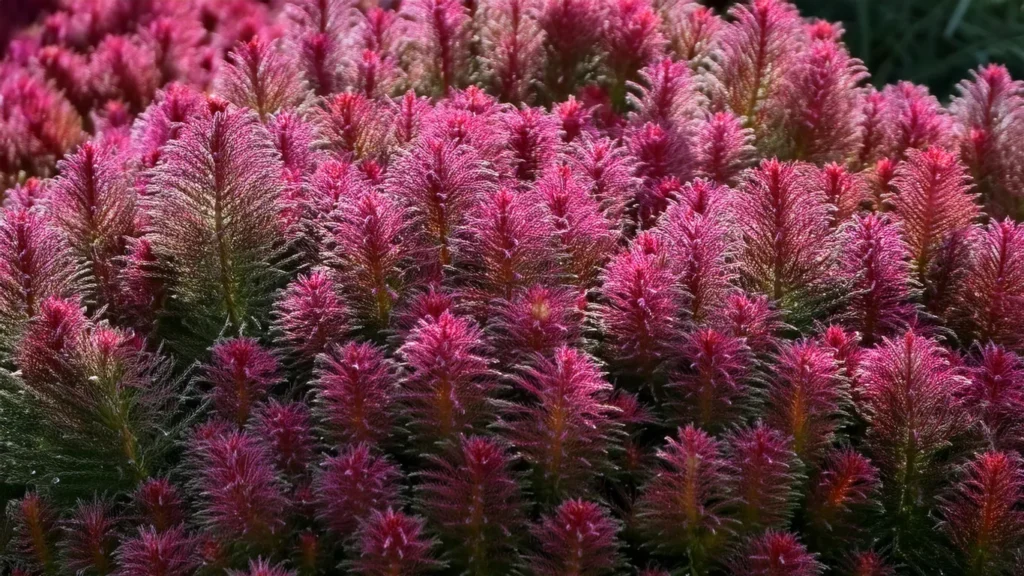
Conclusion
From its vibrant foliage to its ease of propagation, this plant offers both novice aquarists and seasoned enthusiasts a plant that not only enhances the aesthetics of their aquatic ecosystems but also contributes to the overall health and balance of the environment.
By understanding its unique characteristics, providing optimal care, and utilizing effective propagation methods, aquarists can cultivate thriving populations of Rotala Indica and create captivating underwater landscapes that showcase the wonders of nature.
As we’ve explored the essential care techniques, propagation methods, and strategies for addressing common health concerns and pests, we’ve equipped readers with the knowledge and tools needed to successfully incorporate Rotala Indica into their aquariums.
Whether you’re drawn to its vibrant colors, fascinated by its propagation science, or inspired by its role in aquascape composition, this plant offers endless possibilities for creativity and enjoyment in the world of freshwater aquariums.
Frequently Asked Questions
How Can I Incorporate Rotala Indica Into My Aquascape Composition?
Discover tips and techniques for combining Rotala Indica with other plants and creating depth and contrast in your aquascape.
What Are The Different Methods To Propagate Rotala Indica?
You can propagate it through stem cutting, side shoots, and runners.
How Do I Address Common Health Concerns And Pests Affecting Rotala Indica?
Identify and treat nutrient deficiencies and implement safe and effective pest control methods in your aquarium.
Is Rotala Indica Suitable For Both Novice Aquarists And Experts?
Yes, this plant is beginner-friendly due to its ease of care, and experts appreciate its beauty and versatility in advanced aquascaping projects.
Where Can I Find Rotala Indica And Aquatic Plants For Sale?
Check reputable online retailers and local fish stores specializing in aquatic plants to find high-quality Rotala Indica for your freshwater aquarium.
- Unveiling The Wonders Of Riccia Fluitans In Aquascapes - August 7, 2024
- Vallisneria Gigantea Var. Guide To Care And Cultivation At Home - July 31, 2024
- Vesicularia Dubyana Care & Growth Guide Tips For Beginner Gardeners - July 30, 2024
